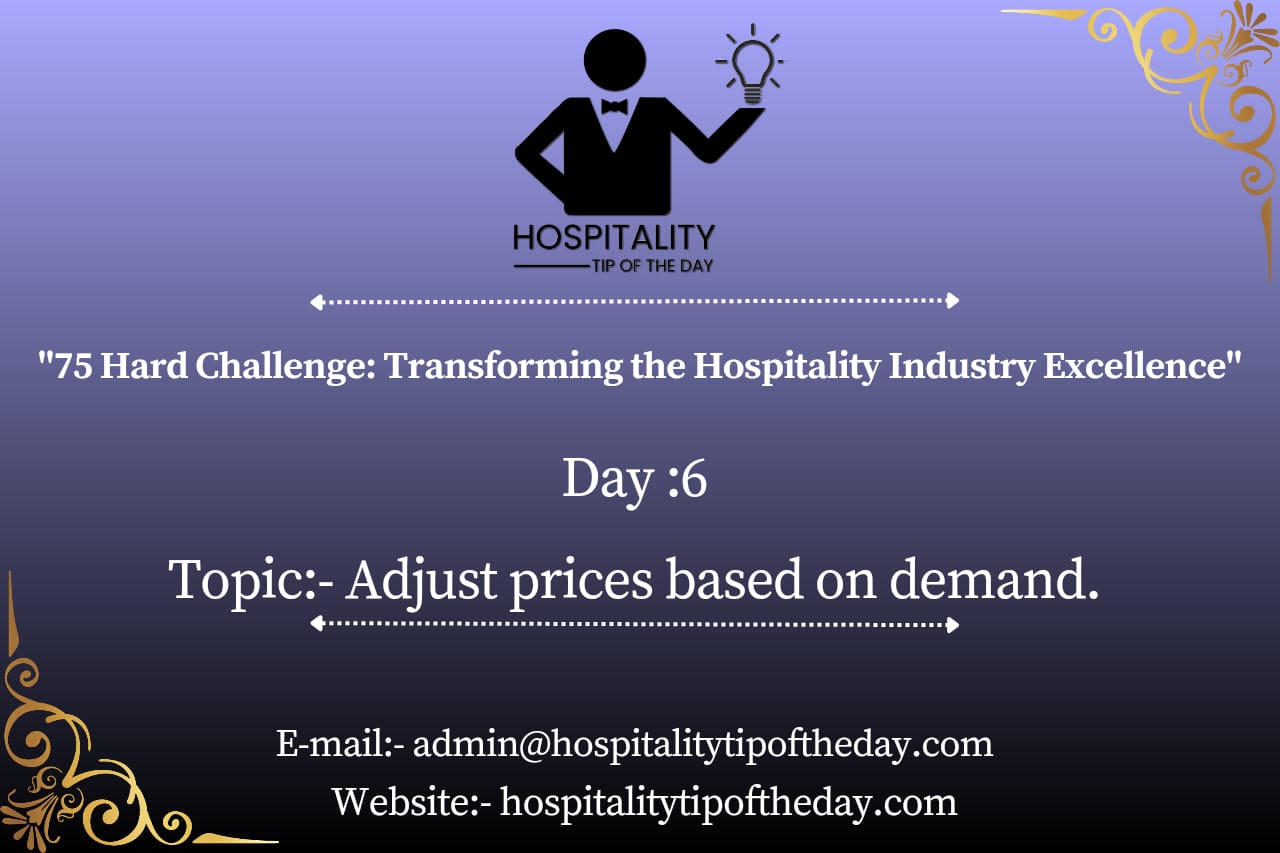
In the ever-evolving world of the hospitality industry, pricing strategies play a pivotal role in determining the success of hotels, restaurants, and other related businesses. One of the most effective strategies at their disposal is adjusting prices based on demand. In this article, we will explore the importance of this dynamic pricing strategy and how it can be implemented to maximize revenue while keeping customers satisfied.
1. Understanding Dynamic Pricing in Hospitality:
Dynamic pricing, often referred to as demand-based pricing, is a strategy that involves adjusting prices for services or accommodations based on real-time demand and other influencing factors. It’s a practice that enables businesses to optimize revenue by offering the right price to the right customer at the right time.
2. Utilizing Data for Informed Decisions:
To effectively implement dynamic pricing, hospitality businesses must rely on data analytics. Utilizing historical booking data, market trends, and competitor pricing information can provide valuable insights into when and how to adjust prices. Advanced software solutions can automate this process, making it easier to stay competitive.
3. Maximizing Revenue During Peak Seasons:
One of the primary advantages of dynamic pricing is the ability to capitalize on peak seasons. For instance, a beachfront resort may charge higher rates during the summer months when demand is high, and lower rates during the off-season to attract budget-conscious travelers. This flexibility allows businesses to optimize revenue year-round.
4. Catering to Different Customer Segments:
Dynamic pricing also enables businesses to segment their customer base and tailor pricing accordingly. Luxury hotels can offer premium packages to high-end clientele while providing discounts or promotions to budget-conscious travelers. This personalization enhances customer satisfaction and loyalty.
5. Staying Competitive in a Digital World:
In the age of online booking platforms and mobile apps, staying competitive is crucial. Dynamic pricing can help businesses respond to sudden changes in demand, ensuring that their prices remain competitive even in a fast-paced digital landscape.
6. Monitoring and Adjusting in Real-Time:
To succeed with dynamic pricing, businesses must continually monitor their pricing strategies and adapt to changing market conditions. Regularly analyzing customer feedback, competitor pricing, and occupancy rates allows for real-time adjustments, keeping the business agile and responsive.
SEO Heading: “Adapting on the Fly: Real-Time Adjustments for Success”
Conclusion:
In the hospitality industry, adjusting prices based on demand is not just a strategy; it’s a necessity for survival and growth. By embracing dynamic pricing, businesses can optimize revenue, enhance customer satisfaction, and remain competitive in an ever-changing landscape. Leveraging data, tailoring pricing to customer segments, and staying agile are key to succeeding in the modern hospitality world. So, whether you run a boutique hotel, a restaurant, or a large resort, consider the power of dynamic pricing to unlock your business’s full potential.








